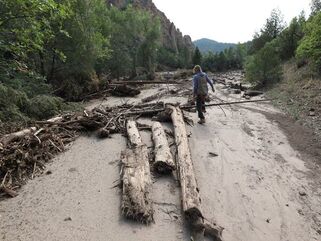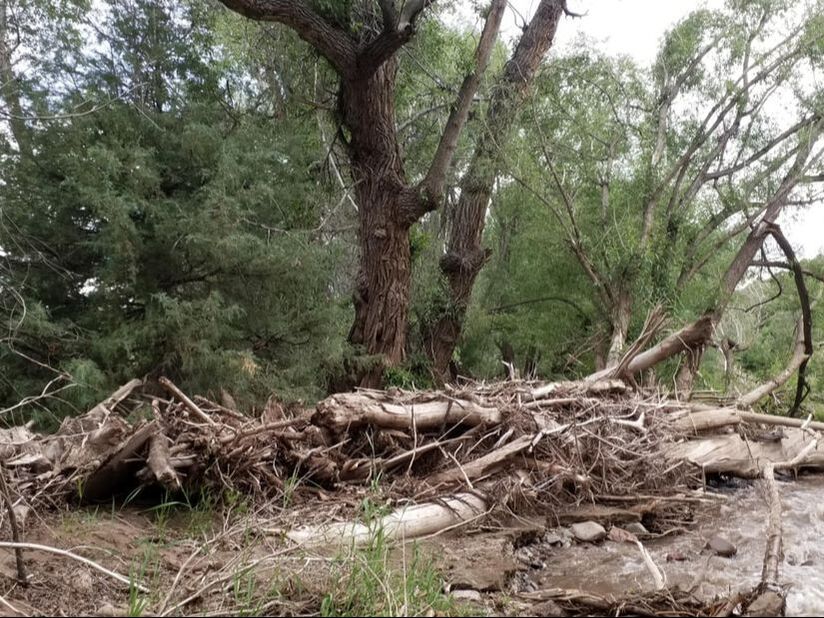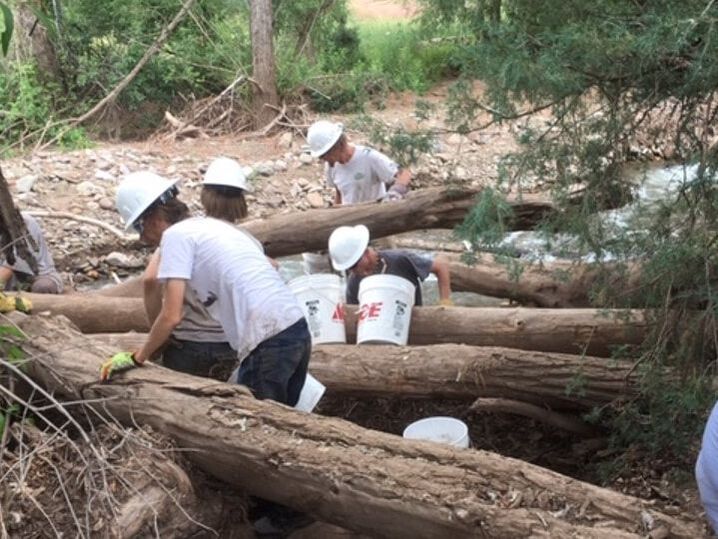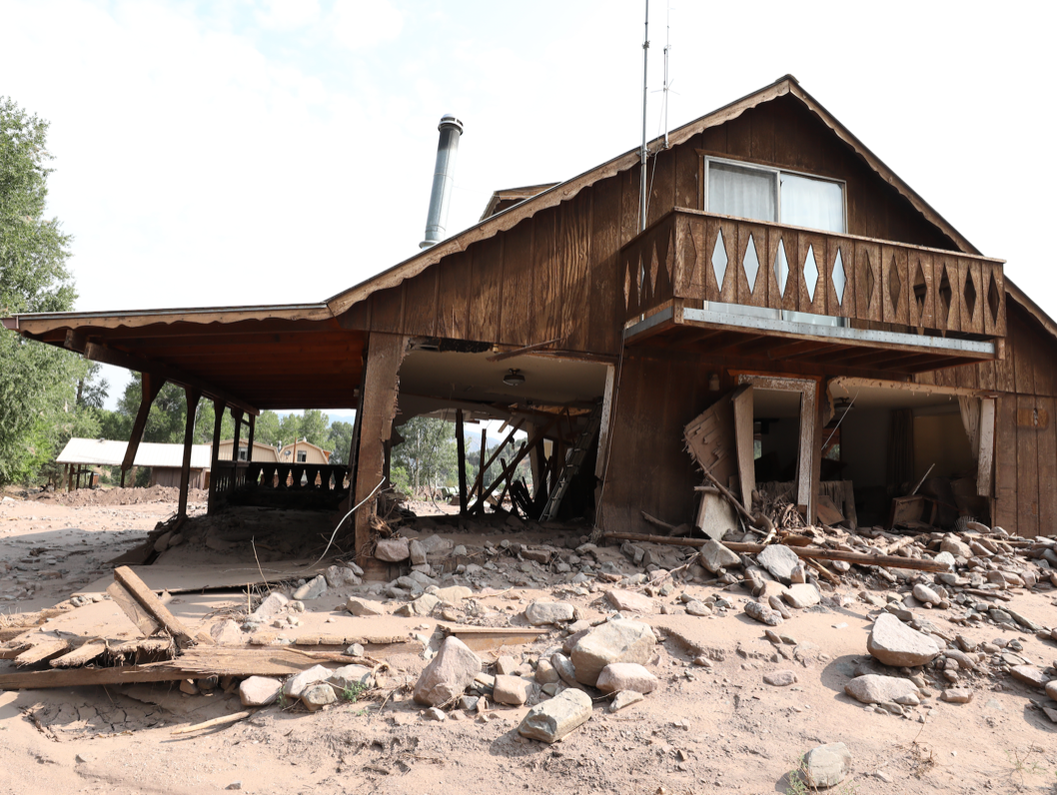Hayden Pass Fire & Flood Recovery Efforts
In July 2016, a lightning strike ignited a fire that would burn over 16,000 acres of forest above the community of Coaldale in western Fremont County. Homes, businesses, critical transportation infrastructure, habitats to threatened species, and recreational areas were all located in and around the burned areas. Following the fire, monsoon rains arrived in early August, bringing the first of many flash floods and debris flows. The extreme weather events and flash floods continued in 2017 and 2018, with the worst damage to date occurring on July 24, 2018. That day, due to the intensity of the rainfall, the Big Cottonwood Creek experienced an estimated flow rate of approximately 4,000 cubic feet per second (cfs) which caused the loss of homes, outbuildings, vehicles, and bridges, and required a helicopter rescue. Flooding continued throughout the summer and early fall.
Since that time, the Upper Arkansas Water Conservancy District has responded and began assisting with flood recovery efforts. Our focus has been to secure critical funding to complement the work of Fremont County and the Emergency Watershed Protection grant they have received from the Natural Resource Conservation Services (NRCS) which is earmarked at protecting private property along the Big Cottonwood. Working in partnership with the Arkansas River Watershed Collaborative (ARWC), we received a grant from the Colorado Water Conservation Board that will fund a fire recovery coordinator, hydrologist, and engineer whose primary function is to coordinate fire and flood recovery efforts in the area. This team will work with stakeholders, landowners, and various residents to develop a comprehensive and inclusive drainage recovery plan along the Big Cottonwood for the long-term sustainability and safety of the area.
As of August 2019, the NRCS Emergency Watershed Protection recovery project has been completed. Funding received through the grant, which helps communities address watershed impairments that pose immediate threats to life and safety, benefited participating landowners along Big Cottonwood. Efforts to more effectively communicate with the local community have been initiated and a website has been developed to provide up to date information and resources (haydenpassrecovery.com). A new participation through outreach plan is underway with hand work being completed by volunteer crews. This has included debris removal from the floodplain, cutting and chipping of hazardous trees, and disposing of trash. Hill slope treatments, including sediment basins, seeding and mulching, and log erosion barriers (LEBS) are also being considered. While meeting immediate needs and planning for long-term recovery is the highest priority, challenges include funding, access to steep and rocky terrain, and accomplishing work in the Wilderness area.
Since that time, the Upper Arkansas Water Conservancy District has responded and began assisting with flood recovery efforts. Our focus has been to secure critical funding to complement the work of Fremont County and the Emergency Watershed Protection grant they have received from the Natural Resource Conservation Services (NRCS) which is earmarked at protecting private property along the Big Cottonwood. Working in partnership with the Arkansas River Watershed Collaborative (ARWC), we received a grant from the Colorado Water Conservation Board that will fund a fire recovery coordinator, hydrologist, and engineer whose primary function is to coordinate fire and flood recovery efforts in the area. This team will work with stakeholders, landowners, and various residents to develop a comprehensive and inclusive drainage recovery plan along the Big Cottonwood for the long-term sustainability and safety of the area.
As of August 2019, the NRCS Emergency Watershed Protection recovery project has been completed. Funding received through the grant, which helps communities address watershed impairments that pose immediate threats to life and safety, benefited participating landowners along Big Cottonwood. Efforts to more effectively communicate with the local community have been initiated and a website has been developed to provide up to date information and resources (haydenpassrecovery.com). A new participation through outreach plan is underway with hand work being completed by volunteer crews. This has included debris removal from the floodplain, cutting and chipping of hazardous trees, and disposing of trash. Hill slope treatments, including sediment basins, seeding and mulching, and log erosion barriers (LEBS) are also being considered. While meeting immediate needs and planning for long-term recovery is the highest priority, challenges include funding, access to steep and rocky terrain, and accomplishing work in the Wilderness area.







